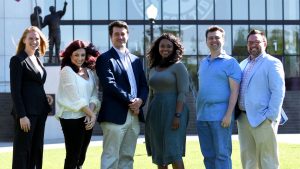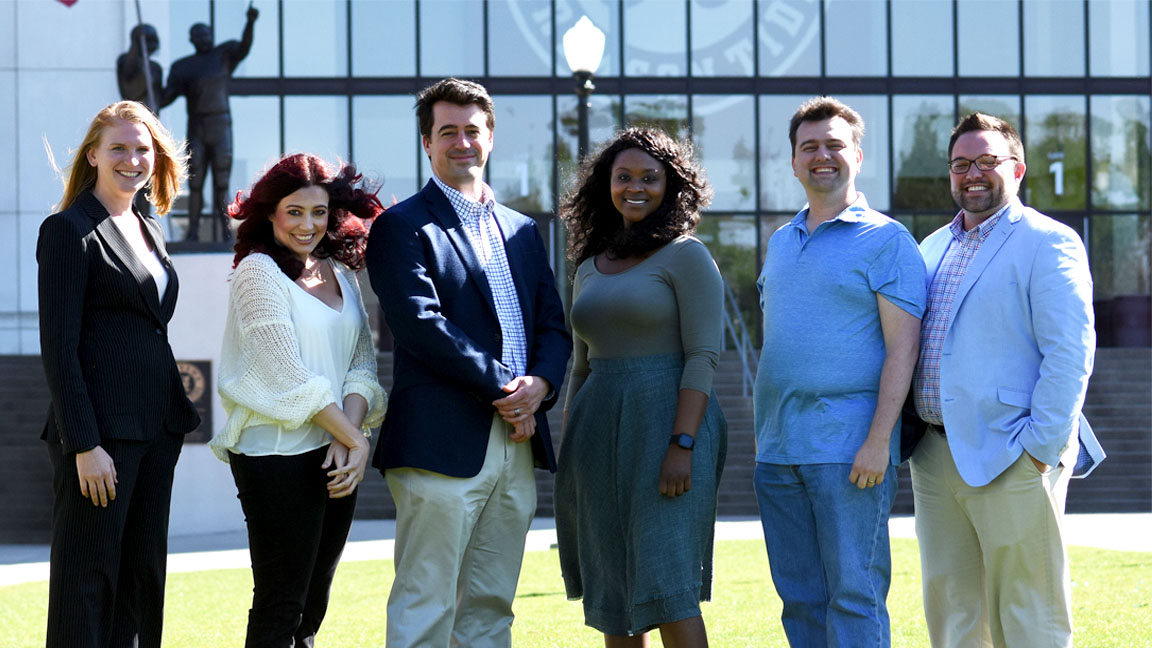The College of Communication and Information Sciences has launched the Grant Writing Institute, designed to position faculty for success in writing grant application proposals and securing grant funding.

The Grant Writing Institute provides participants with the tools necessary to complete an application for research funding and submit the application to a federal or state agency or a foundation within 12 months of the start of the program.
Led by Drs. Kim Bissell and Anneliese Bolland, the program works through a partnership between the Institute for Communication Research and departments within C&IS to provide a semester-long course release for each of the participants.
“With all the aspects grant writing includes, it’s common to spend at least 60 to 80 hours working on a grant proposal,” said Dr. Kim Bissell, associate dean for research at C&IS. “The idea with the Grant Writing Institute is to buy out the time professors would take to teach a course and have them utilize that time to work on a grant instead.”
Over the course of the semester, participants meet for six scheduled sessions designed to lead them through the process of writing and submitting a grant application. The sessions cover topics such as how to justify budgets in grant proposals and how to prepare for a meeting with a program officer from a funding agency. Each session assigns specific tasks to be completed by the next session to assist the participants with staying on schedule.
As a bonus, The University of Alabama Office of Proposal Development reserved one of its flights to Washington D.C. specifically for the faculty members to discuss their grant proposals with program officers. According to Bissell, these meetings provided valuable feedback to grant writers and helped secure advocates for their grant when the time comes for the review panel to award funding.
In addition to teaching about the grant writing process, the program guides all participants through submitting their own grant. By the end of May 2019, each will have a finalized grant application in excess of $100,000 for review, with a submission deadline of December 2019.
“Grant writing is tedious. It’s time consuming, and it can be frustrating to make the numbers work. This experience and process will help our participants be more confident each time they apply,” said Bissell.
The goal of the Grant Writing Institute is to give faculty the tools and resources they will continue to use long after their time in the program. — Dr. Kim Bissell
2019 C&IS Grant Writing Institute Participants:
- Robin Boylorn (communication studies), $150,000 from the National Endowment for the Humanities to hold a summer teaching institute on stories of the South.
- Becky Britt (journalism and creative media), up to $500,000 from the National Institute of Dental and Craniofacial Research to investigate oral health disparities in rural communities and develop an oral health intervention to improve adherence to health practices and education about the role of oral health.
- Brian Britt (advertising and public relations), $400,000–600,000 from the National Science Foundation to study internal processes of organizational evolution.
- Leah LeFebvre (communication studies), $100,000 Mind & Life Prosociality, Empathy, Altruism, Compassion and Ethics Grant to identify mindfulness and compassionate strategies used to reduce suffering from ghosting, a contemporary breakup strategy that ceases communication in an effort to withdraw access through emerging media.
- Scott Parrott (journalism and creative media), $200,000 from the National Science Foundation to launch a science communication program for undergraduate students.
- Matt VanDyke (advertising and public relations), up to $500,000 from the National Science Foundation to investigate public and decision-makers’ perception of drought, and to develop an interactive decision-making tool that forecasts drought and water availability.
